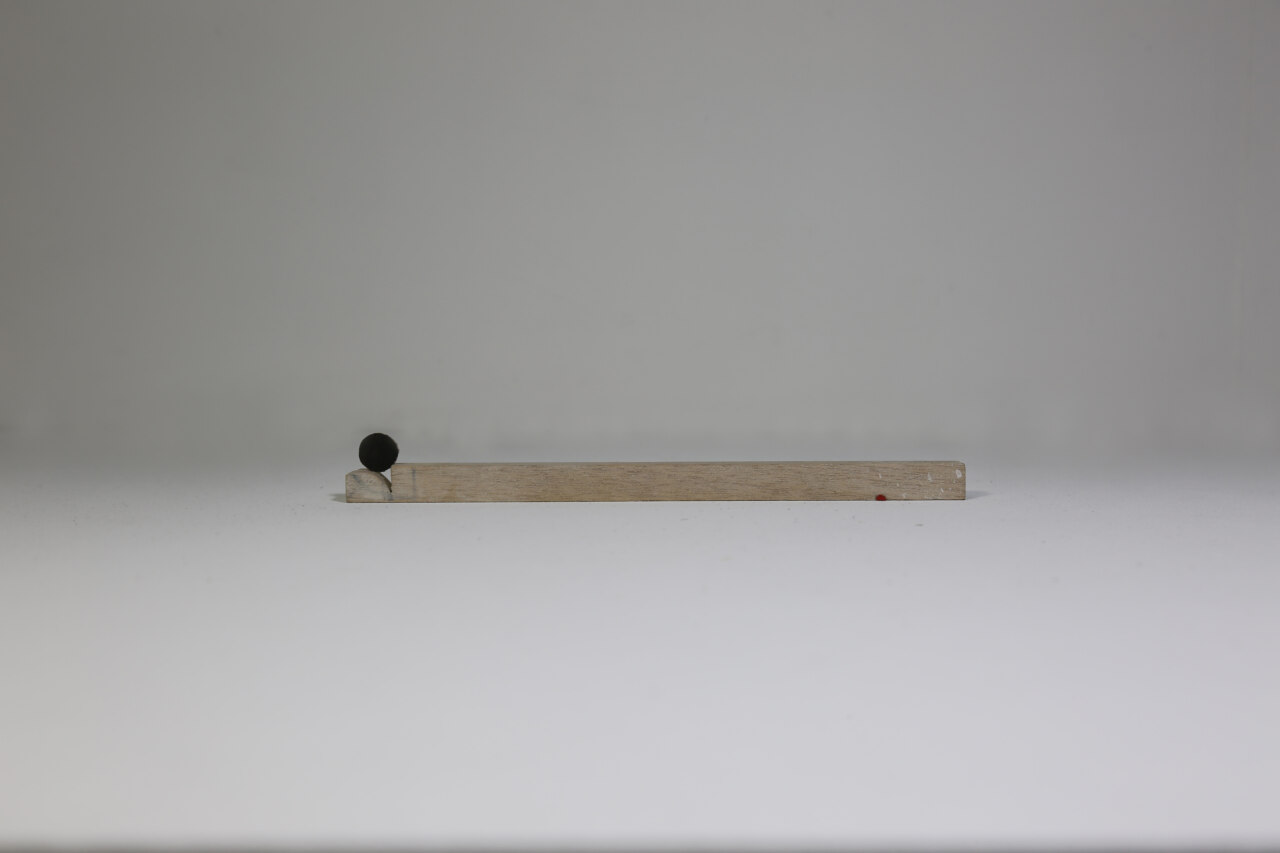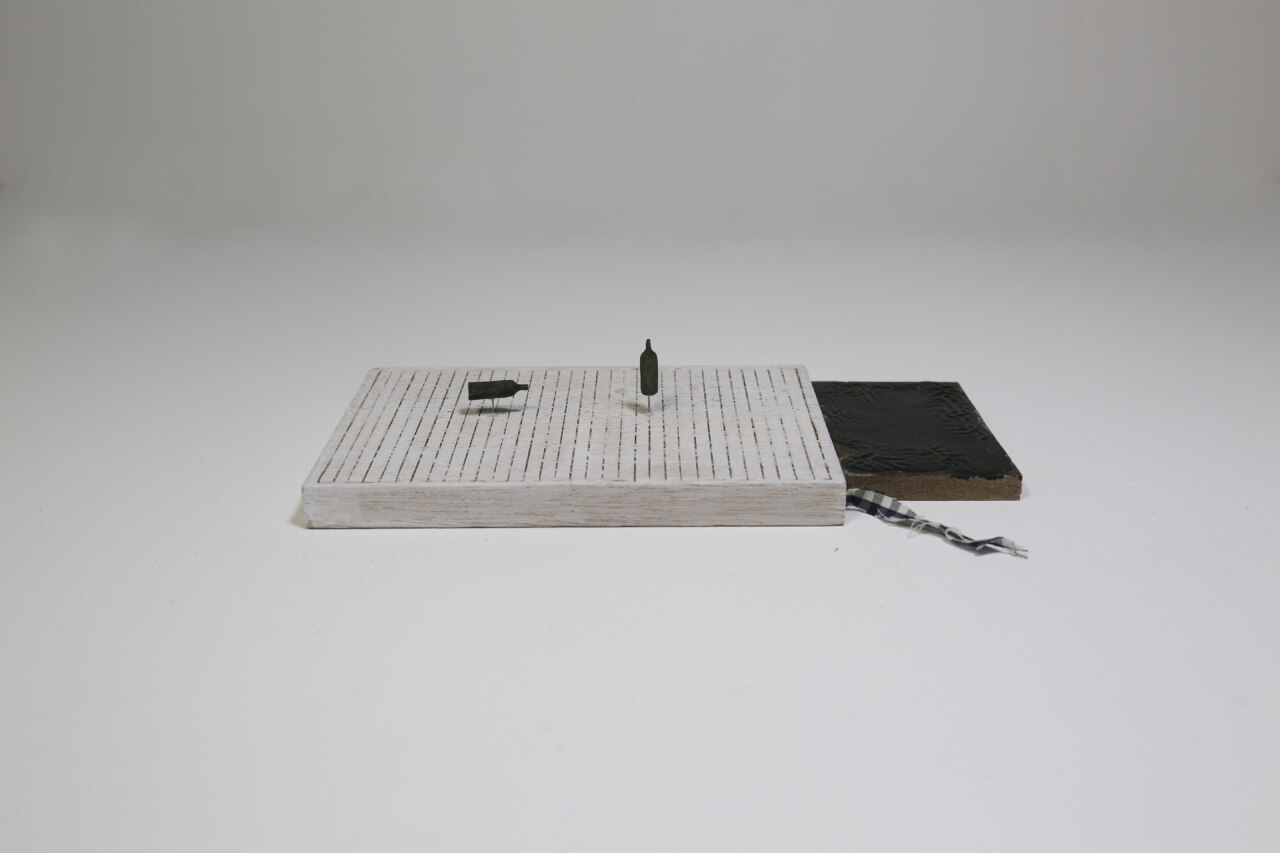For this show, we invite you to think about emotion as an effect of coming into contact with a specific place. We are pleased to present works by Tommy Malkeoff, David Hammons, Kenji Ide, and Grupa Budapeszt. The point of contact between these pieces is an encapsulation of a state of frailty and vulnerability. The artworks portray a unique interaction between people and space which cannot be enclosed in available categories of description like color, architecture, or politics. They invite contemplation about the poetics of places that takes place on a metaphysical level. The feelings cannot be named, maybe because they do not actually exist, or on the contrary, because they exist beyond what we know.
Tommy Malekoff (b.1992 Virginia, USA) photographs and paints his surroundings to present a contemplative physical and mental American landscape. Malekoff’s practice takes shape of a lonely journey as the artist drives around the US. It is the places that he finds along the way that become his subjects. Whether it be a gas station or a drive-through, the depicted spaces acquire an emotional charge on Malekoff’s works. The illuminated windows invite the travelers into a world where all their needs are met: food, human contact, and shelter. The artist says “I began imagining corner stores as churches and fast food restaurants as theaters”. Indeed, we perceive a specific architecture through our memories and associations. The presented landscapes exist in the physical realm but only gain specific meaning when digested through our minds. Coincidentally what we see reveals as much about the corporeal sphere as it does about the personal one.
David Hammons’ (b.1943 Illinois, USA) practice revolves around the themes of black culture, urban landscape, and symbolisms found in daily objects. “Phat Free” is the only video Hammons ever made. In it, we are faced with the streets of New York and the artist walking around them, kicking a bucket. “Phat” references a slang word used in African-American communities in the 1980s and 1990s to mean cool or sexy, especially used when describing music. The noises from the video emanate jazz rhythms, painting an eerie audiovisual landscape of NYC. Within cities, it is common to come across things or people that we ignore – a stray dog, someone sleeping on a bench, or a man rushing to work. Hammons’ video communicates this state of being a non-subject in a non-place as he aimlessly wanders through dark NYC streets. An immense feeling of emotional and physical emptiness arises that simultaneously disturbs and soothes the senses.
Kenji Ide’s (b. 1981 Yokosuka, Japan) sculptures become intricate organisms of their own. Created using materials like wood, wax or found objects, the sculptures astound with their delicacy. Each referencing a specific memory or place for the artist, they become sketches of his personal world. The ‘Night Hour’ series presents Ide’s memories of drinking at different times. Ide explains the moments they symbolize: “What I heard and said after drinking, for example, talking about Monoha with artists friends, meeting and asking Jiri Kovanda, crying when Isamu Wakabayashi passed away, and drunkenly confessing during the Leo meteor shower.” Despite their deeply personal nature, Ide’s sculptures invite a universal impression of beauty and introspective travel. In that sense, his works are carriers and receivers; they arouse an emotion as well as give space for us to project our thoughts onto them. There is an ongoing exchange taking place in some distant but available subliminal sphere.
Grupa Budapeszt (founded in 2016 in Budapest, by artists and curators: Igor Krenz, Michał Libera, and Daniel Muzyczuk). Grupa works with audiovisual materials, narration, time, and more generally life and art. For this show, they suggest a reimagining of the exhibition’s concept through a humorous and experimental gesture. The show’s title acted as their point of departure. They propose re-reading it through the lens of the influential book „In Search of the Miraculous: Fragments of an Unknown Teaching” from 1949 by Russian philosopher P. D. Ouspensky which recounts his meeting and subsequent association with George Gurdjieff. Gurdjieff was a philosopher, mystic, spiritual teacher, and composer of Armenian and Greek descent. They are interested in Gurdjieff’s practice which in its efficacy encapsulates the state of frailty and vulnerability reminiscent of feng shui (or art). They chose to look at the corrections that Gurdjieff concluded in his music, suggesting their own interpretation in the form of a sound composition. Alongside, they add an errata to the curator’s text, further opening the door to this new reading that fragments the aforementioned relation to space.
“The key to unlocking the potential is in the position of the instrument. Most pianos are black – the color of mystery and sophistication – and should be placed in the most northern area of the house. The element for north is water and is symbolized by black and blue colors. North is also the area for career and life path, which provides the element of ‘vitality, growth and unlimited vision.” – Grupa Budapeszt
Mela Miekus



































